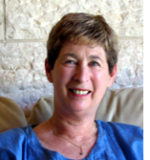By Dorothea Shefer-Vanson

MEVASSERET ZION, Israel — The title of the lecture given by Yivsam Azgad under the auspices of the Israel Translators Association was billed as “Translating Science.” Although I personally did not translate that kind of material when I worked as a translator, I have a passing interest in the subject due to my husband’s occupation as a physicist.
The lecture was held in the very pleasant conference venue adjacent to the Herzl Museum on Jerusalem’s Mount Herzl, and was attended by some 15 participants from all over Israel.
Mr. Azgad began his talk by stating that he had parted company with the Israeli school system at the age of fifteen, but that did not mean that he had not continued learning. This obviously marked him as a teenage rebel and, presumably, an autodidact. He did not say as much, but his appearance told us that his teenage years were long forgotten. What he did tell us was that he had gone on to forge a respectable career for himself as a scientific journalist.
Mr. Azgad proceeded to tell his audience that it was important when translating scientific material to understand the subject matter in the source language and, if possible, convey it as accurately as possible in the target language. That rule is good for any kind of translation, though it obviously might be more difficult to achieve when it comes to translating scientific subjects which are not universally accessible.
Mr. Azgad then tried to make us undertake a thought experiment (“gedank experiment,” as devised by Einstein) and transport us as physicists from the corridor of the physics department at the Hebrew University to a similar corridor at Princeton University. Would we notice any difference, he asked. The answer he gave was no, we wouldn’t, because physicists the world over all speak the same language, use the same terms and equipment, and share a common bond. Any two physicists in a given group of people will always find one another and be able to communicate with one another, wherever they may hail from originally. Their identity as scientists is the paramount aspect of their being (over and above their national or individual identity).
Giving a few examples of abstruse scientific theses that he (or someone) had had to translate, the lecturer made it clear that translating science is phenomenally difficult. I can subscribe to that sentiment, being married to a physicist and having been involved in translating the title and English summary of his doctorate (“Excitation Processes in Organic Systems Under Irradiation with Vacuum Ultraviolet Radiation,” in case you’re interested).